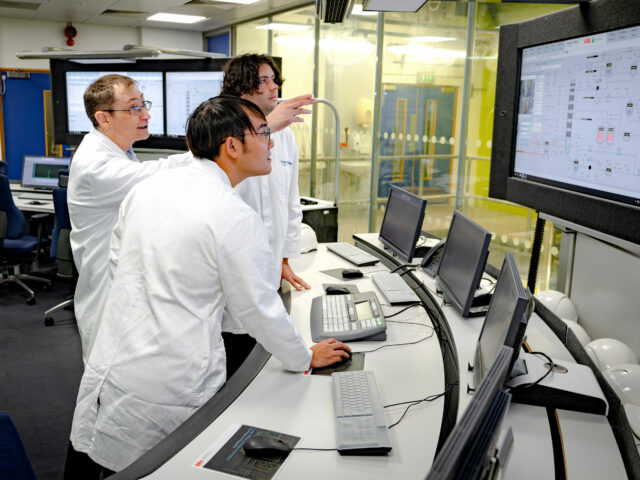
Nadav Avni, CMO of Radix Technologies explores how education can future-proof itself with the benefits of device as a service technology.
For many school districts in the United States, the windfall budgets from the COVID-19 pandemic are drying up. In fact, the final tranche of this $190 billion government aid ends by next year. This development poses a threat to many districts’ plans of upgrading their computer equipment. Faced with a shrinking budget, many are looking at other options to stretch their dollars. One promising alternative is the device as a service (DaaS) model.
Let’s face it: keeping up with technology can cost a lot of money. As public institutions, it’s rare for educational districts to always have the budget funding they need for annual tech upgrades. What’s more, instructors themselves are often hesitant to adopt new technology. Besides, given the rapid advancements in technology, many tech skills become obsolete in 18–24 months.
A device as a service model solves these issues by ensuring schools have the devices they need and the means to manage them. Let’s explore how DaaS providers benefit schools, their educators, and their students.
Accessing up-to-date and reliable devices
One great feature of the device as a service approach is continuity. If the present curriculum requires new software that needs newer hardware, the service provider will happily supply it. This way, students get access to up-to-date hardware and software that are critical to their skills development.
For school districts, this means avoiding the huge capital costs associated with large-scale tech upgrades. A single school district can cover thousands of classrooms with dozens of students in each class. Plus, a wide-scale upgrade of even a single piece of hardware can take months to roll out. This will take a large chunk of a school district’s limited budget.
At the same time, the service provider guarantees the reliability of the devices issued to the entire school district. DaaS providers typically charge a monthly subscription fee for each device. So, for the business model to succeed, they must ensure that all devices are working as advertised. They need to be fully functioning, well-maintained, and updated with the latest software and firmware versions.
Streamlined device management and support
To provide uninterrupted services, the device as a service provider should have a reliable mobile device management (MDM) platform running in the background. Many providers actually offer MDM services as an add-on option.
School districts may pass on this option to save money. However, investing in this minimal additional cost can pay dividends in the long run. After all, the right MDM software can provide much more service than default device managers that run on legacy protocols.
Dedicated MDM software usually runs on cloud systems to provide remote management services. Cloud connectivity via reliable servers such as Amazon Web Services (AWS) means that remote linking with school devices is always secure and reliable. It also allows IT administrators to remotely monitor each device’s health and apply updates, fixes, or patches when needed.
This means that providers won’t need to deploy service teams to schools to perform manual fixes. They won’t even need to spend money on service calls to guide users on how to troubleshoot. Instead, admins can easily perform these updates entirely by remote control.
Enhanced security and data protection
Reliable mobile device management software can also provide security to prevent data theft and mitigate the effects of device loss. Individual student data is among the most guarded information and is covered by robust privacy laws such as FERPA. When handling sensitive information, device as a service units should remain on alert for any attempts to access or copy recorded data.
By using competent MDM software, admins can ensure data protection at all times. Using AWS cloud services is one way to enhance security, as it provides constant high-level end-to-end encryption.
Proactive security measures can also help secure sensitive student records. This includes administrative control that assigns access levels to users depending on their function. For instance, students can only access active modules and view their records, while teachers have greater control over both learning materials and class records. School administrators and analysts can collect individual device data and aggregate them into insights via analytics.
If a device reports attempts of unauthorised access, IT admins can initiate a device shutdown to prevent further attempts. They can also wipe data cleanly off missing or stolen devices if the chances of recovery go down.
In case of software bugs, IT admins can remotely dispatch updates or roll back the software to a previously stable version. They can even apply these fixes during downtimes to minimise disruptions, whether in batches or simultaneously throughout the entire fleet.
Cost-efficiency and budget optimisation
Instead of allocating yearly funds to continuously upgrade school IT equipment, some districts are smartly adopting the device as a service model. Similar to the software-as-a-service (SaaS) model, DaaS utilises the services of an outside service provider.
Instead of simply handing out software, DaaS providers also assume the management, maintenance, and security of a school’s hardware inventory. They supply and manage software and offer device management services.
Rather than make annual capital expenditures, school districts will now only pay subscription fees based on the number of devices deployed.
Device as a Service allows educators to focus on education instead of device management

Conventional wisdom in education requires us to let teachers teach and administrators administer. Removing the burden of technology from their to-do lists allows them to do what they do best: mould young minds into better citizens.
However, the realities of modern technology and innovation require a heavy price. School districts that choose the technology route often find themselves at the mercy of government budgets and private donors.
Thankfully, the device as a service model is an available option that lets schools remain technologically relevant without spending too much. Leasing out hardware and software instead of wholesale acquisitions allows for unprecedented flexibility in budget and management. Even better, it removes the burden of administration and device management and assigns it to industry experts. As a result, educators can completely focus on educating and empowering the next generation.




